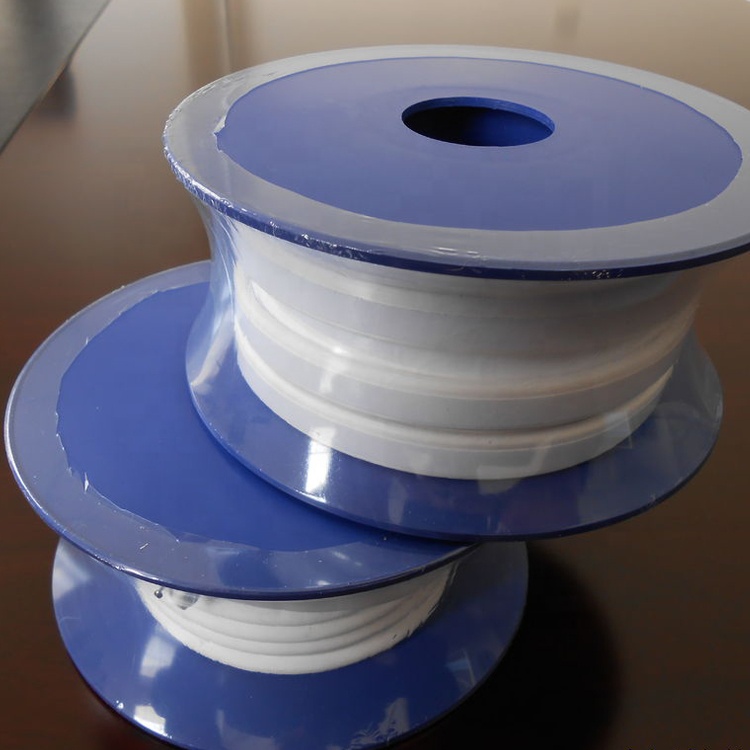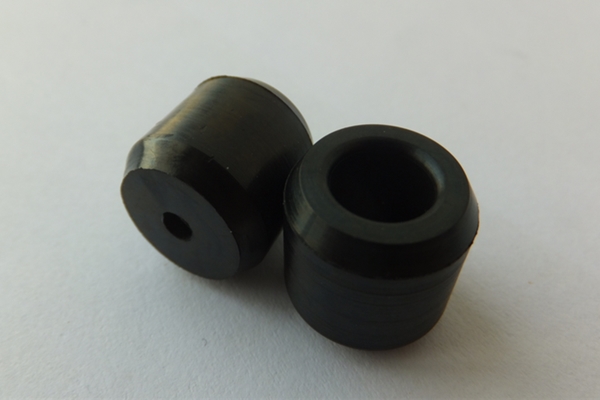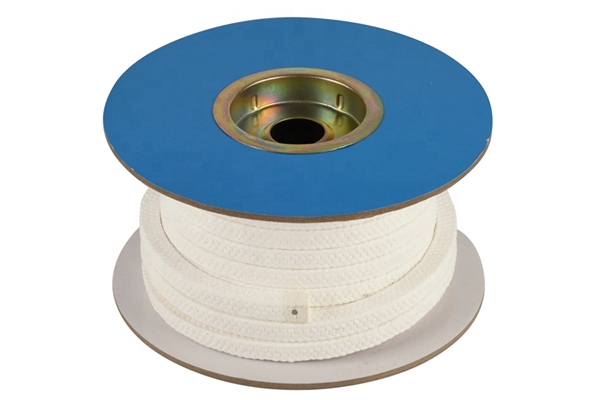PTFE gaskets are Polytetrafluoroethylene Gaskets, which are also known as Pure PTFE gaskets or Teflon gaskets. They are made from PTFE rods, pipes, and sheets that are mechanically machined or cut into flat gaskets, V-shaped gaskets, piston rings, ball valve gaskets, and more. They can also be molded using molds to create compression-molded PTFE gaskets. PTFE is widely recognized for its excellent corrosion resistance, resistance to aging, insulation properties, and cleanliness. That’s why it finds extensive applications in various fields, earning the nickname “Plastic King.”
PTFE can maintain good mechanical strength between -100°C and 100°C, and it can be processed into various PTFE products of different shapes. It can also be combined with other materials, such as being used as a lining for metal gaskets or as a component in various combinations like PTFE envelope gaskets, spiral wound gaskets, or as a layer for metal gaskets like metal serrated gaskets and metal corrugated gaskets.
Please note that PTFE gaskets become brittle at temperatures below -185°C and exhibit creep or degradation above 200°C, so they are not suitable for extremely high-temperature applications. PTFE gaskets have a low thermal conductivity and a high coefficient of linear expansion, which can lead to cold flow under load. It is recommended to use them in applications with flat or grooved flanges at medium temperatures and low pressures, and they work even better when there is a waterline present. The addition of various fillers such as fiberglass, graphite, molybdenum disulfide, and bronze powder can improve the performance of PTFE gaskets, which are referred to as modified PTFE gaskets.
In the realm of industrial engineering, PTFE (Polytetrafluoroethylene) gaskets have carved a niche for themselves as indispensable components for sealing applications. Often referred to as Teflon gaskets, these gaskets are engineered from PTFE, a material celebrated for its remarkable properties. This informative article explores the science behind PTFE gaskets and their wide-ranging applications in diverse industries.
1. The Chemistry of Corrosion Resistance
At the heart of PTFE’s exceptional performance lies its corrosion resistance. PTFE gaskets can bravely withstand the onslaught of most chemical agents, with only molten alkali metals and elemental fluorine causing them to flinch under specialized conditions.
2. Insulation Prowess
PTFE gaskets double as exceptional insulators, making them ideal for applications requiring electrical insulation. Their ability to prevent electrical conductivity is highly sought-after in industries with stringent safety standards, such as the electrical and electronics sectors.
3. Aging and Weathering Resilience
Age and weather are no adversaries to PTFE gaskets. These gaskets boast superb resistance to aging, ensuring that their tensile strength remains virtually unaltered even after years of outdoor exposure. Their robustness in adverse climatic conditions is a testament to their reliability.
4. The Low Friction Champion
With a low coefficient of friction, PTFE gaskets are inherently non-stick. This attribute not only facilitates ease of installation and disassembly but also makes them suitable for applications where minimizing friction is paramount.
5. The Purity Paradigm
In an era where purity is paramount, PTFE gaskets offer a sterling solution. Their exceptional chemical stability ensures that they do not contaminate substances they come into contact with. This feature makes them indispensable in industries with stringent hygiene requirements, including food and pharmaceutical production.
6. Mechanical Might
Don’t be fooled by their chemical finesse; PTFE gaskets are also mechanical powerhouses. Their relatively high mechanical strength allows them to be transformed into various sealing products, meeting the diverse needs of different applications.
7. The Temperature Tolerance
While PTFE gaskets are versatile, they do have their temperature limits. They become brittle at temperatures below -185°C and exhibit creep or degradation above 200°C. Thus, they are best suited for sealing applications within a medium to low-temperature range.
8. Filler Enchantment
The adaptability of PTFE gaskets is further enhanced by the incorporation of fillers like fiberglass and graphite. These fillers augment their performance, making them customizable to specific industrial needs.
The applications of PTFE gaskets are diverse, spanning industries such as chemical processing, petrochemicals, pharmaceuticals, food production, and power generation. They are the go-to choice for sealing points in equipment like pipelines, valves, pumps, and pressure vessels. The diverse range of specifications and shapes available makes Pure PTFE gaskets a versatile solution for myriad industrial challenges.
In conclusion, PTFE ( Polytetrafluoroethylene) gaskets stand as exemplars of engineering ingenuity. Their unique combination of properties makes them a cornerstone of modern industrial sealing, embodying the harmony between science and practicality
We can provide Pure PTFE Gaskets in both standard and non-standard sizes, including ASME, DIN, JIS, GB, and other standards. We can produce gaskets in various shapes, including round and square, and reinforced PTFE gaskets are also available.




